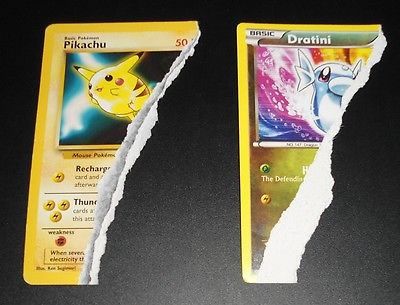How to Know If Pokémon Cards Are Fake

The world of Pokémon trading cards has been booming in recent years, with fans and collectors alike eager to catch them all. However, as the demand for these valuable cards grows, so does the number of counterfeit cards circulating the market. To protect yourself as a collector, it’s essential to know how to spot fake Pokémon cards. This article will guide you through some of the best tips and tricks for identifying counterfeit cards.
1. Examine the Card Material
Authentic Pokémon cards are made from high-quality materials with a consistent thickness, texture, and color. Counterfeit cards may feel thinner or thicker than genuine ones, have imperfections such as rough edges and uneven cutting, or appear off-color when compared to official cards.
2. Check the Card Fonts and Text
Fake Pokémon cards often use incorrect fonts or have text errors that are not present on genuine cards. Check for inconsistencies in font type or size, spelling mistakes, misaligned text or any other inconsistencies in the card’s design.
3. Compare Card Images and Holographic Patterns
Invalid Pokémon cards may have distorted images or poorly printed illustrations that don’t match their authentic counterparts. If you’re examining holographic or foil cards, pay close attention to how the pattern changes when you tilt the card under light. Official foil cards have a clean and consistent holographic pattern, whereas fake ones will often lack depth and detail in their reflective patterns.
4. Look for Set Symbols and Rarity Markers
All legitimate Pokémon cards display a set symbol (an icon representing the expansion it belongs to) and a rarity indicator (a circle, diamond or star signifying how rare the card is) on their bottom right-hand corner. Ensure that these symbols are present and correspond to the correct set and rarity level of your card.
5. Assess Card Borders and Backings
Counterfeit Pokémon cards might showcase inconsistent borders at the card’s front that appear thicker in some places and thinner in others. Examine the back of the card as well: official Pokémon cards have a deep blue color on their backside, while fake ones often display a lighter shade.
6. Verify Energy Symbols and Card Numbers
Make sure to inspect Energy symbols for irregularities – fakes may use incorrect symbols or have unusual colors. Additionally, review the card’s numerical information, such as individual card numbers and statistics like HP or attack damage, for discrepancies.
7. Review Market Value
If a deal seems too good to be true, it probably is. Counterfeit cards are generally sold at significantly lower prices than genuine ones. Research the market value of the card in question to gauge its authenticity before making a purchase.
8. Seek Professional Verification
When in doubt, seek professional assistance to verify your Pokémon cards’ authenticity. Certified grading companies like PSA or Beckett can provide expert evaluations – though they usually charge a fee for their services.
In conclusion, arming yourself with knowledge about the common characteristics of counterfeit Pokémon cards will help you distinguish between real and fake ones. Take your time when examining and researching your cards – haste can lead to mistakes that may cost you both valuable time and money. Happy collecting!






